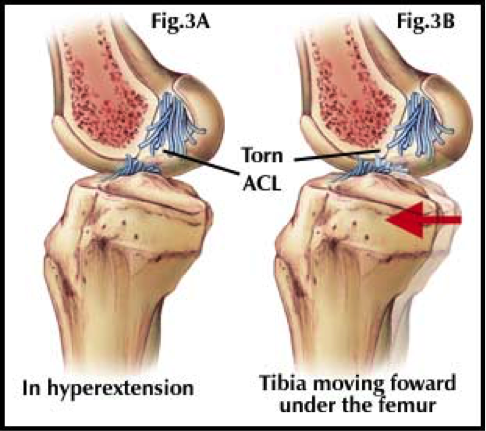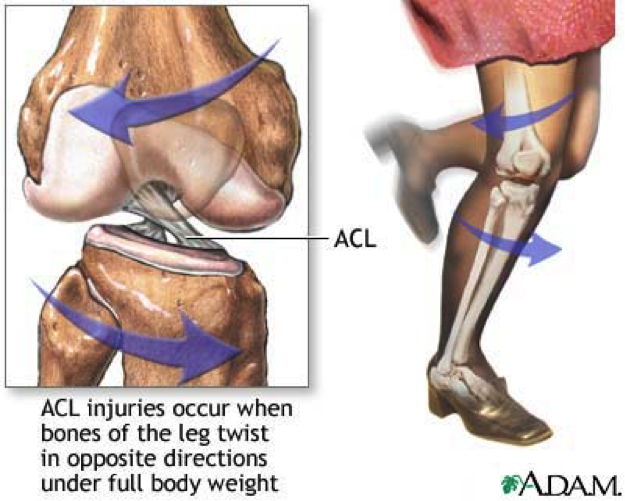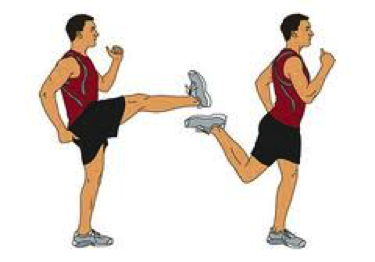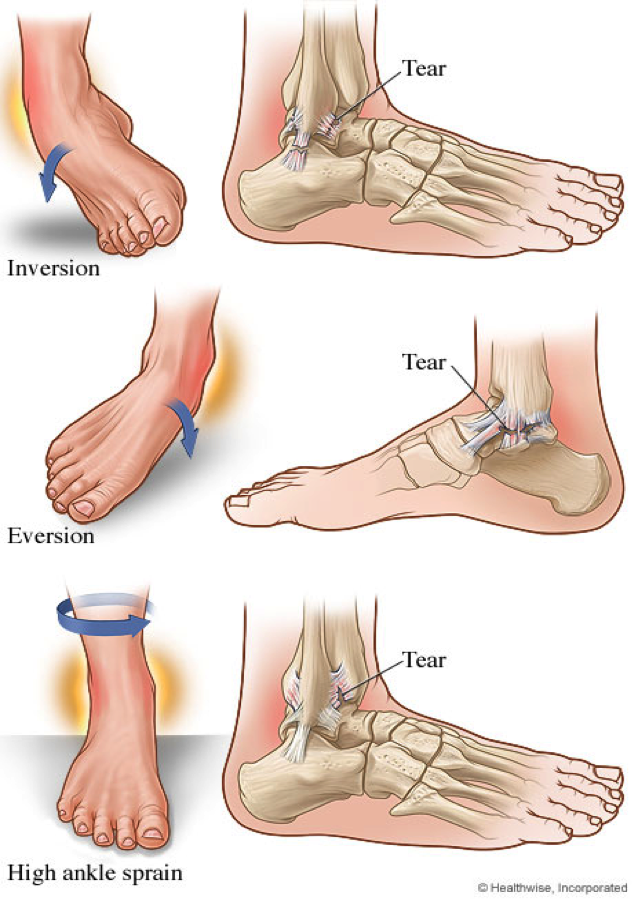ACL injuries
With a recent influx of ACL ruptures coming through the clinic, I thought it timely to provide a little more information to you all about the injury and its consequences.
Anterior Cruciate ligament rupture is one of the most common and serious injuries to the knee. The consequences of this injury, is not only the immediate disability but also the long term effect on function of the knee. As is often the case with most injuries, there can be more than just the ACL that has been damaged. Usually there is bruising to the knee joint as well as potential damage to the meniscus.
Rupture of this ligament affects the stability of the knee and is why it can cause such problems for people. Its job is to stop the movement forward of the tibia on the femur and when ruptured can often give the sensation of instability.
If you follow sport, then you will have more than likely seen the close up coverage of various sports people either getting caught up in a rugby tackle or landing awkwardly while playing netball and collapsing to the ground. Sports that we often see associated with this injury are rugby, soccer, skiing and netball. The mechanism of injury is quite different for each of these sports. Netball is generally concerned with non-contact type of injury where there is a sudden deceleration prior to a changing in direction or a jump and landing motion. The non-contact type of injury usually occurs when the foot lands on the ground and the knee snaps back into extension.

Contact ACL injuries such as occurs in rugby, are a result of force applied to the outside of the knee inwards, causing the knee to collapse.

Why do some people get this injury compared with others? Sometimes it is purely bad luck and other times it can be related to how we move our bodies and the muscles we recruit to perform certain tasks such as jumping and landing. There can be differences in the way we sequence our movements from one individual to the next or even between male and females.
The immediate management is usually to let the acute knee settle down, followed by a period of prehabilitation. Following this, surgery is the best option. It is a good 6-9month recovery following the surgery depending on what it is you want to get back to doing. Surgery involves replacing the ruptured ligament with an autologous graft from either the hamstring or patella tendon.
It is important long term to regain the stability around the knee, as recent studies have shown that there is an increased likelihood of developing osteoarthritis in the knee later in life.
It’s that time again, which must mean that summer is on its way! With the touch season starting again it’s time to get those muscles in shape to prevent injury and help you stay on the field for longer. Here are a few simple tips for touch rugby to help you avoid injury; but if you do have any injuries during your game or want advice on any niggles that you may already have, then give us a call.
Just a Few Tips that may help prevent those injuries from occurring.
Make sure you allow enough time before your game to warm-up effectively. Even though it is a social tournament, it is still important to warm-up. Some suggestions are running to warm up as well as sideways running, stride outs, backwards and forwards running, passing the ball etc followed by some dynamic stretching particularly around the hips.

Because of the nature of touch, the calf complex gets put under quite a bit of stress, so making sure you have good strength and flexibility would be helpful in preventing shin pain and calf injuries.
Warming down post game is important and this isn’t just taking the first beer that is handed to you. Again doing some stretches post game with help with recovery of those muscles helping to prevent muscle soreness.
If you do happen to hurt yourself and don’t get around to seeing us down there, remember that RICE is very helpful for acute injuries. RICE is very helpful in the first 48hours of your injury.
- Rest: Staying off the injury initially is very good. Also avoiding Alcohol helps to reduce the bleeding into the injured area
- Ice: Ice for 10-20mins until the area of injury feels cold
- Compression: Tubigrip or a compression bandage is often helpful to apply compression
- Elevation: It is often helpful to elevate the injured limb
If your injury hasn’t settled after a couple of days, call us on Ph 378 6890 for an appointment.
The popularity of tennis continues to increase each year in New Zealand. It’s a terrific game to play no matter what age you are! Given more people are playing than ever, it seemed like a good time to take another look at one of the most common injuries that occur in the sport of tennis – ankle sprains.
Some of you may have experienced an ankle sprain. It is common in tennis because of the sudden changes in direction, the acceleration and deceleration of movements and general fatigue from these types of movement. These factors all contribute to placing increased stress on the stability structures around the ankle joint. A sprain of the ankle involves injury to the soft tissue structures that provide support to the ankle. This includes ligaments (of which there are 11 around the ankle joint) and musculotendinous complexes such as the peroneals.

The direction you go over on your ankle generally determines which soft tissues structures are injured around the ankle. An inversion injury is one where you roll outwards causing the ligaments on the outside of the ankle (the lateral ligament) to become overstretched and injured.
An eversion injury is where the ankle rolls inwards causing strain on the larger medial or deltoid ligament.
A high ankle strain is usually as a result of the foot staying planted while the rest of the body rotates away from it. This causes damage to the ligaments that connect between the lower end of the tibia and fibula bones.
In an ankle sprain the ligaments are placed under an abnormal amount of tension causing them to either become overstretched, or going beyond that to tearing from mild to full rupture of the ligament. Clearly the more damage done to the ligaments, the greater the length of rehabilitation.
Treatment
Early management in these injuries is important. Rest, ice, compression and elevation are all important in the initial 48hours post injury. During this time it is advisable not to take any anti-inflammatories, as you want your body to start the healing process by activating the inflammatory response.
Physiotherapy plays an important part in the rehabilitation from these injuries, from restoring movement, reducing swelling, developing strength and proprioception around the ankle. Strength and balance work (proprioception) give you the confidence that you can return to playing sport without any further problems. Sometimes if the ligaments are badly damaged then it can be helpful to wear ankle supports while playing sport.
For a thorough assessment and rehabilitation plan, book an appointment here at Ponsonby Physiotherapy. Call us at 09 378 6890 or you can make a booking online.



